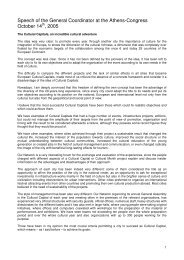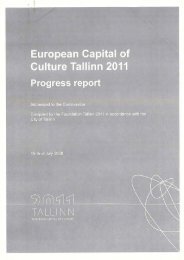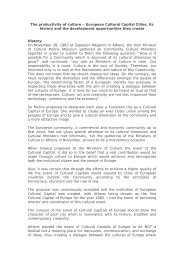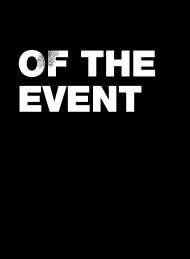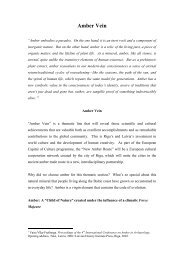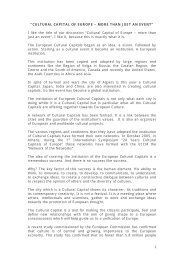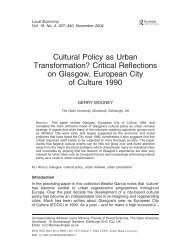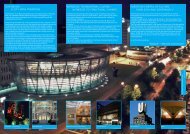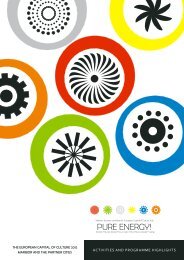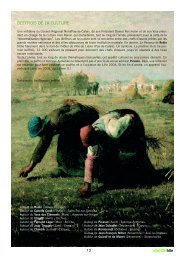Concise.pdf - Brugge Plus
Concise.pdf - Brugge Plus
Concise.pdf - Brugge Plus
- No tags were found...
Create successful ePaper yourself
Turn your PDF publications into a flip-book with our unique Google optimized e-Paper software.
Neighbourhood and world<br />
More than any other cultural projects, participation-based projects are open to involvement,<br />
dialogue, interaction, time intensiveness, and a faltering search for balance between creativity,<br />
quality, involvement and accessibility. Despite a lively neighbourhood and community<br />
life in Bruges on the one hand, and a solid package of cultural and artistically minded<br />
initiatives on the other, the two worlds seemed to exist disassociated from each other. In any<br />
case, participation in the current sense of the word was not very noticeable in Bruges at the<br />
end of the twentieth century.<br />
It was very much BRUGGE 2002’s intention to make socio-artistic projects possible<br />
within its field of action. To this end a full-time programme employee was recruited.<br />
BRUGGE 2002 was on the one hand fearful of a superficial and quantitative participation<br />
discourse and on the other hand of the detrimental side effects that all socio-cultural<br />
or socio-artistic initiatives that are of an overly one-off or short-term character<br />
leave behind in community life. Therefore dialogue and confrontation were by no<br />
means avoided. What was actually done with the projects at the end of the day<br />
depended as much on the effort put in in the field as the work done by the BRUGGE<br />
2002 team. It has always been our conviction that there is no point at all in setting<br />
up projects in which there is no basic dynamic among the organisations or in the<br />
neighbourhoods themselves. And fortunately we were never averse to a generous<br />
dose of festive content.<br />
37<br />
CONCISE<br />
Under the title “Neighbourhood and World” we can distinguish three kinds of project:<br />
• BRUGGE 2002 initiatives in which co-operation was sought with neighbourhoods<br />
and cultural partners (“Wijk-Up” [a play on words with the English, using the<br />
Dutch word “wijk” meaning “district”], “Streets of Style”).<br />
• Initiatives originating from middlemen, often action groups or amateur companies<br />
developing a large-scale event in dialogue with BRUGGE 2002 (Bridges with the<br />
South, Solidarity Day, Amateur Art Week, Assebroek Totaal, Dance schools, etc.).<br />
• Initiatives for which organisers sought co-operation with BRUGGE 2002 in order to<br />
go about thinking and working on the basis of participation and reflection (’t Kl!kt,<br />
Oral History, Congress “On soon… and now”).<br />
Most of these projects were very successful and<br />
moreover mobilised thousands of people. As<br />
regards participation and action to break down<br />
barriers, this is certainly of importance. Via these<br />
projects, for example, many hundreds of people<br />
came into contact with the Concertgebouw, the<br />
Public Library or one of the many BRUGGE 2002<br />
initiatives.<br />
© JEAN GODECHARLE<br />
The most all-embracing project was certainly<br />
Wijk-Up. In three Bruges districts – Sint-Pieters,<br />
Zeebrugge and Sint-Jozef – a genuine festival was<br />
organised, lasting five days in each case and<br />
including a whole host of activities. Some were<br />
organised in the three districts, whilst others were<br />
specifically organised in and by a particular district.<br />
The Escale Circus Tent was the constant feature,<br />
travelling from one neighbourhood to another.<br />
The “Cinemobile” was also deployed three times.<br />
The (e)migrants



